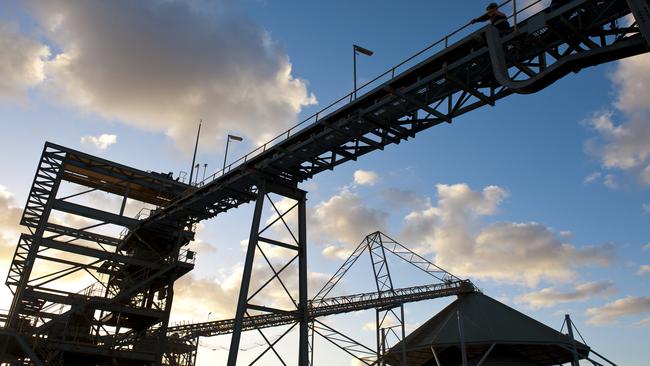BHP in about-turn on nickel, with thermal coal mines set for sale
BHP’s switch back to nickel and away from coal signals a shift to the needs of renewable power.

BHP Group has gone from being prepared to get rid of its nickel portfolio to looking for more, says chief financial officer Peter Beaven, with thermal coal now topping the mining giant’s unwanted commodity list.
Mr Beaven, in a presentation to investors and analysts on BHP’s long-term strategy, flagged a shift in BHP’s thinking to produce commodities demanded by a world reliant on renewable energy in the long term, not fossil fuels.
Rather than BHP’s Nickel West division being on the auction block, BHP is again on the hunt for more nickel, used in the production of batteries.
Instead, BHP’s thermal coal mines could now be for sale.
Mr Beaven’s presentation said the use of coal to produce power could be phased out “sooner than expected”, although BHP expects demand to stay strong in the short term.
“Thermal coal should remain a large market – but over time we expect it to plateau and then decline, as headwinds strengthen,” he said.
“Our energy coal exposure is just 3 per cent of our asset base. But it is made up of two very high quality mines which generate high margins. Our focus will be on maximising value to shareholders, whether we are long term owners or not.”
BHP chief executive Andrew Mackenzie announced last week that Nickel West was again a core part of BHP’s business.
Mr Beaven went further yesterday, saying the company was on the lookout for more nickel assets - of the right sort.
“We can, with a degree of conviction, say that adding options in copper and nickel sulfides (as opposed to laterites) are likely to be a sound investment. Demand will grow and, at the same time, new supply sources will be hard to discover and permit, and will be more expensive to develop,” he told analysts.
“While demand for batteries will drive lithium and, to a lesser extent, cobalt demand, we also believe that abundant supply of the former, and substitution of the latter, reduces the attractiveness of these commodities for us.”
That is mostly likely to come from increased exploration spending around BHP’s existing nickel projects in Western Australia, but Mr Beaven indicated the company could also dip back into the mergers and acquisitions market.
“We are interested in adding more nickel sulphide resource to our portfolio. So we should continue to add exploration options in these areas,” he said.
“We do not need to do M&A. But we never discount it as a way to acquire great resource bases, especially early in the life of a project when the optionality is not necessarily fully understood or valued.”
Mr Beaven also flagged a further slowdown in the development of BHP’s massive Jansen potash project, saying it had become clear demand for fertilisers will be met from expansions of existing projects in the short-term, suggesting the Canadian potash play won’t have a place in the market until the mid-2020s.
“Jansen makes sense on a strategic level. It creates a high-margin, long-life asset, with multiple, basin-wide, expansion opportunities,” he said.
“But as existing excess supply capacity will only be utilised by the middle of next decade, so first production from Jansen could only arrive in that time frame. The end markets represent significant diversification from current exposures.”



To join the conversation, please log in. Don't have an account? Register
Join the conversation, you are commenting as Logout